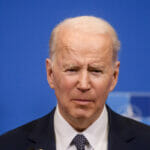A dozen years ago, U.S. Secretary of Defense Donald Rumsfeld appalled the Western European public by telling a Dutch journalist, “You’re thinking of Europe as Germany and France. I don’t. I think that’s old Europe. If you look at the entire NATO Europe today, the center of gravity is shifting to the east.” Though Rumsfeld himself never used the phrase “New Europe,” pro-American pundits immediately began contrasting new Eastern European democracies, which they saw to be full of energy and hope, with the older Western European states, which they saw to be sclerotic.
This rather optimistic vision of the New Europe soured well before fighting broke out in Ukraine last year, and it is now becoming clear that Eastern Europe is — as Stratfor founder and chairman George Friedman suggested in the title of his latest book — one long series of flashpoints. While George explains the events taking place between the Baltic and Black seas from a 500-year perspective, I want to go even further by suggesting that we can only understand their full significance by considering them within the context of a longer time frame.
The great historian Fernand Braudel once suggested that we should think about time on three different levels. The first is the long term, where the forces of geography play out across millennia and change is “almost imperceptible.” Next is the medium term, where institutional history unfolds from century to century with “slow but perceptible rhythms.” The final level is the short term, where events — or the “crests of foam that the tides of history carry on their strong backs” — play out over a 24-hour news cycle.
So far, discussions of the ongoing events in Eastern Europe have been almost entirely confined to the short-term level. A few innovative studies, including George’s Flashpoints, have stepped back to look at the medium term, but none have taken a look at the long-term perspective. And yet it is only with an understanding of all three levels that we can start to see where recent events might be taking us.
The Roots of an Ancient Conflict
The most important long-term force to consider when trying to understand Europe-Russia dynamics is the age-old process whereby mankind’s great breakthroughs — the invention of agriculture, cities, states, empires and the fossil-fuel industry — occur in geographically favored spots and then spread outward, often at an imperceptibly slow pace. We can examine this same phenomenon from a medium-term perspective to see the ebbs and flows of the cores’ expansion, or from a short-term vantage point to fill in the details of the conflicts that constantly unfold in the borderlands around the expanding core. To fully understand the most recent flare-up in Ukraine, we must look at the past 15,000 years of Europe’s history through all three lenses.
As is so often the case, our story begins when the world warmed up at the end of the last Ice Age. In a region known to archaeologists as “the Hilly Flanks” — roughly the intersections of modern Iran, Iraq, Turkey, Syria, Lebanon, Jordan and Israel — climate change made it possible for hunter-gatherers to domesticate wheat, barley, sheep, goats and cattle, thereby inventing farming by about 9500 B.C. Populations boomed, and increasingly complex and powerful societies developed in the region. People, institutions and technologies began to spread inexorably from the Hilly Flanks, moving both east and west, carrying farming to Central Asia by 6000 B.C. and Western Europe by 4500 B.C. As this agricultural revolution began to encroach upon the lands of hunter-gatherers in the periphery, the borderlands between the farming and foraging communities became sites of constant violence.
Meanwhile, by 4500 B.C., a new transformation had begun in the region that we now call the Middle East. Villages had grown so big that they were beginning to turn into true cities, and by 3500 B.C., governments with centralized coercive powers were starting to take shape. These societies flourished best in the great Tigris, Euphrates and Nile river valleys, rather than in the old agricultural heartlands of the Hilly Flanks, resulting in new urban cores in Egypt and Mesopotamia that were surrounded by less developed agrarian villages. As the urban cores began expanding, and city-states formed in Greece and Turkmenistan by 2000 B.C., the borderlands between the cores and their peripheries once again saw bitter fighting.
After 3000 B.C., finer-grained evidence emerges that allows us to see some of the medium-term processes occurring within this long-term picture. Around 2200 B.C., Egypt’s Old Kingdom and Mesopotamia’s Akkadian Empire collapsed violently and the urban core expansion temporarily retreated. The same thing happened to the Indus Valley civilization in 1900 B.C., and palaces burned from Greece to Israel as a dark age set in around 1200 B.C. But after each medium-term collapse, the long-term trend of expansion resumed, and by the first century A.D., the Roman Empire had united the entire Mediterranean Basin.
As Rome swallowed up the older Egyptian, Mesopotamian and Greek urban heartlands, it created new borderlands along the Rhine and Danube rivers, turning Germany and the Balkans into new peripheries of the imperial core. The Germans learned much from the Roman Empire about economics, organization and war, eventually becoming effective rivals and contributing to the collapse of Rome between A.D. 200 and 500.
But even the fall of the Roman Empire could not halt the long-term process of expansion. By A.D. 750, a powerful new Muslim core had taken shape in the Mediterranean, pushing the periphery of less-developed farming societies east of the Elbe and north of the Carpathian Mountains for the first time. By A.D. 1000, states were forming among the farmers of Poland, Hungary and Ukraine, fighting fiercely against the expansion of the German, Byzantine, Arab, Persian and Turkish empires while simultaneously attaching themselves to the growing cores by converting to Christianity or Islam.
Here the pace of expansion began to accelerate. After A.D. 1400, a new core that exploited oceanic trade took shape along Europe’s Atlantic coast and began moving toward democracy and industrialization after A.D. 1750 Along its eastern edge, a semi-periphery emerged in Lithuania, Poland and Sweden, and beyond it, a far periphery that reached into Muscovy. Trapped between the Mongol khans and equally aggressive Western neighbors, the Russians took their cue from the Germans some 2,000 years earlier and learned how to wage modern wars from their more developed European competitors.
Between the 1550s and 1680s, Moscow absorbed the whole of Siberia and began a series of back-and-forth struggles against the Western core that continues to this day. At the start, the West held the initiative: In 1610, a Polish army captured Moscow, and in 1709, Swedish King Charles XII marched all the way to Poltava, Ukraine. But as the modernization efforts of Catherine and Peter the Great took effect, the balance of power shifted. Russia became the arbiter of Europe’s great power disputes and, in 1799, sent its army as far as Switzerland. Napoleon then sacked Moscow in 1812, but the Russians occupied Paris only two years later. The Industrial Revolution then restored the West’s advantage, and after an Anglo-French victory in Crimea in 1856, German forces overran much of Russia in 1918 and nearly took Moscow in 1941. The rapidly industrializing Soviet Union forced its way back to Berlin by 1945, only to see the Western core drive it back beyond its 18th-century borders after 1991.
In Eastern Europe, the Competition Continues
Against this backdrop, Russia’s use of force in 2014 should not have been so surprising. For 15,000 years, the borderlands between expanding cores and their peripheries have formed the most violent flashpoints on Earth, few of which have been as contested within the past 1,000 years as Eastern Europe. It seems that the New Europe is not so new after all.
The lesson of Europe’s history seems to be that if Western Europe is to remain one of the world’s most developed regions, it must successfully pull Eastern Europe into its orbit. And if Russia is to transform itself from a periphery to a core, as Mesopotamia did 5,000 years ago and Western Europe did 500 years ago, it must achieve the same thing.
Looking east from the Atlantic, Western leaders in the 1990s interpreted geography through the lessons of 1814 and 1945, concluding that they had to contain Russia or even push it away from the Western core. Looking west from Moscow, Russian leaders interpreted geography in terms of 1610, 1709, 1812 and 1941, concluding — as Vladimir Putin did 10 years ago — that “the demise of the Soviet Union was the greatest geopolitical catastrophe of the [20th] century.” From Putin’s perspective, Ukraine’s lean toward the West has threatened to return the balance of power to that seen before Catherine the Great annexed Crimea in 1783, or when Peter the Great took the throne a century earlier. But from an American perspective, Russia’s use of force to reverse the verdict of the Soviet Union’s collapse in 1991 threatens to bring us back to the Cold War.
If Western and Russian leaders had taken a longer-term perspective over the past quarter century, perhaps they would have acted differently. If they had, perhaps the payoffs for both would have been better; then again, perhaps they would have been worse. Either way, it doesn’t truly matter because there is no reset button for us to press. The 1,000-year-old “New Europe” will continue developing and converging with Western economies and values, guaranteeing conflict in the peripheral zone stretching from Estonia to Ukraine, and the hard logic of core-periphery relations will continue to play out as it has for 15,000 years.
“The Not-So-New Europe is republished with permission of Stratfor.”











